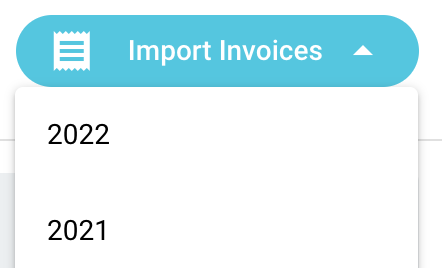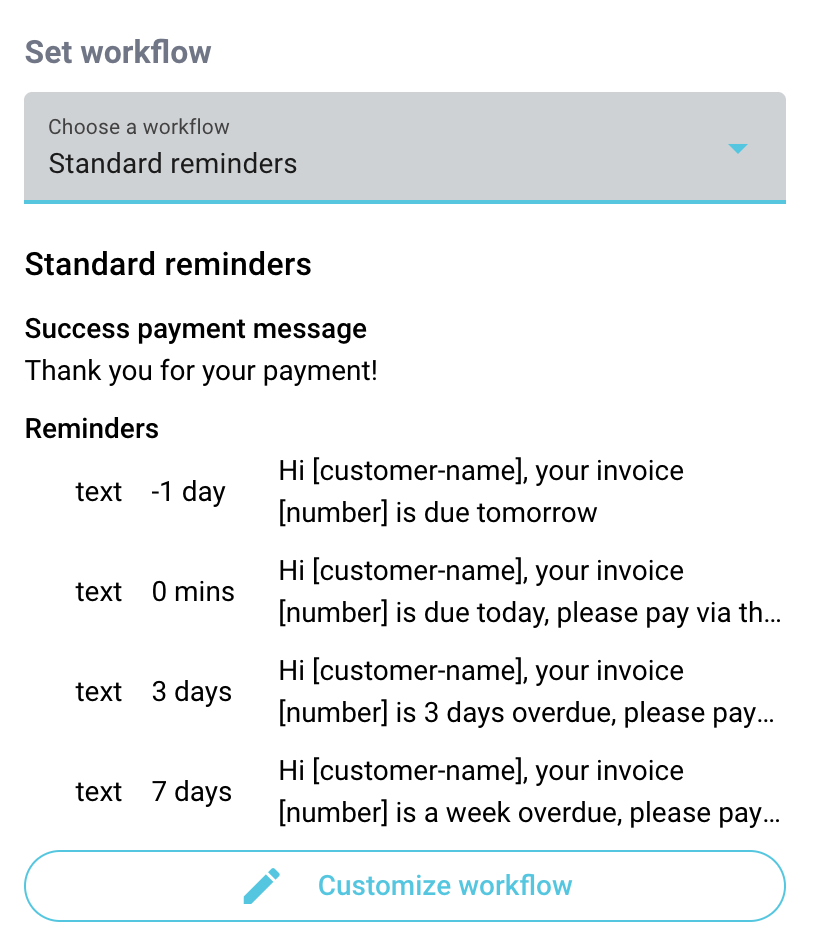Invoices created in Quickbooks can be imported into Converso to be sent via text to contacts. It's then easy for the contact to pay in a couple of clicks via a link in the text message.
1. Connecting to Quickbooks
i) To connect with Quickbooks, first go to Settings > Integration and under Quickbooks, click on “Connect to Quickbooks”.
ii) You'll be prompted to connect first with your Intuit account. Once this is complete, you'll be asked to then connect with your Quickbooks account.
iii) Once you have connected, the connection confirmation page will appear, which you can then close.
iv) You will then be redirected back to the Settings > Integrations screen which will confirm connection with your Quickbooks tenant name and ID:

2. Importing contacts
You can import contacts from Quickbooks into Converso. Just click on the import contacts button, and the import will take place in a few seconds.
In order to import new invoices it's necessary to first import contacts from Quickbooks.
If you already have contacts saved in Converso, and these contacts are also present in Quickbooks, then these will be identified through either mobile number or email, and will not be duplicated. In addition, any further detail that is stored in Quickbooks, eg address, will then be updated in the Converso record of the contact.
Quickbooks can be treated as the master repository for contact info, as any subsequent change will be updated in Converso. Updates made in Converso however will not be updated in Quickbooks.
Please note that Quickbooks allows phone numbers and emails to be used twice with separate contacts, however this is not allowed in Converso. Where there are conflicts, we import in the order Quickbooks provides, dropping the conflicting records.
For instance, if you have 100 contacts in Quickbooks, but three of them share the same phone number, then you will only import 98 contacts.
3. Importing invoices
i) Historic invoices
You can import past invoices from Quickbooks, for instance to send reminders to invoices that remain unpaid. Under Settings > Quickbooks, click on the "Import Invoices" and choose the invoice year that you wish to import:

Click on the chosen year, and first contacts will be downloaded (so latest contact information is available) and then all imports for the relevant time period are imported.
This process takes about 30 seconds, depending on the number of invoices. A confirmation button with number of imported invoices and contacts will then appear in the left hand menu.
You can now open the invoice in Converso and add a message and send to the customer for payment.
If the contact pays via their original Quickbooks invoice, the status will be updated to "Paid" in Converso, and similarly, if the invoice is paid via the Converso invoice or reminder, the status in Quickbooks will be updated to "Paid".
If the invoice in Quickbooks is marked manually as paid, it is important, once the payment has been marked as received, to also save as "payment received" against the actual invoice, in order to mark as paid in Converso.
ii) Importing new Quickbook invoices
After you integrate your Converso account with Quickbooks, and have also imported your Quickbooks contacts, any invoice that you save in Quickbooks will also be automatically imported into Converso.
Once an invoice is saved in Quickbooks, it appears in the invoice list in Converso:
 You can open the invoice by clicking anywhere on the row of the invoice entry.
You can open the invoice by clicking anywhere on the row of the invoice entry.
Once imported, Quickbooks data can not be edited in Converso, however edits made in Quickbooks to the invoice will be updated in the version saved in Converso.
4. Invoice data
All the Quickbooks invoice data (business name, contact name, address, item number, description, discount, tax, amount) is included in the relevant fields in the Converso invoice.
Add contact contains Quickbooks details of the contact’s name, business name, and billing address.
Add details includes invoice number, created date and due date.
Add product This section contains the Product/service in Quickbooks that is translated to the Code in Converso, plus Description, Quantity, Rate, Discount, and VAT imported from Quickbooks.
The totals will take into account the tax treatment set in Quickbooks - exclusive of tax, inclusive of tax, or no VAT.
Create message and link allows you to either create just a payment link, or to send a message via text with a payment link to your Quickbooks contact. There is a default message format with placeholders to personalize the intro message:

Set workflow This section allows you to select an existing workflow, or customize a new workflow, for sending payment reminders and thank you messages.

When a reminder is sent as part of the workflow, a green arrow appears next to the reminder message, and when you hover over the arrow, it shows the date and time that the reminder was sent.
Each reminder sent also includes a payment link.
If an unpaid invoice (eg sent by email from Quickbooks as a past invoice) is imported from Quickbooks, it’s possible to set an overdue reminder. This could be, say, 3 days after the invoice is due. A text reminder with payment link will then be sent automatically on this date.
You can turn off a reminder by clicking on the workflow page and deleting the relevant reminder, and then clicking Save. This change will not be saved against the workflow in the workflow list, but only for that particular invoice or checkout.
5. Sending an invoice
You can send the invoice via text at any time, but it is recommended to add a message and a workflow with any required reminders or thank you messages.
When you click on “Save and Send”, the message and an invoice link, which is a unique URL, is sent to the contact.
Once the invoice has been sent, a conversation is created in the conversation panel, with a notification with link to the created invoice, as well as a link to the invoice form, together with payment status.
The invoice is also included in the invoice list, and "Last action" status is changed to "Sent" with the name of the user who sent the invoice, and time and date.
![]()
You can edit all the data entered in Converso (eg reminders, introductory and thank you messages) after the invoice has been sent, and upto the point of payment.
6. Getting paid
When the invoice is paid through Converso, it is marked as paid in Converso, and also the status is updated automatically in Quickbooks to "Paid" (this normally requires a refresh to appear).
When the invoice is paid in Quickbooks, the invoice status is automatically updated in Converso as "Paid".
It's possible to update manually the paid status in Converso to update to paid in Quickbooks. This however requires that the payment method matches one of the chosen payment methods eg either Crezco (for Pay by Bank) or Stripe (for Pay by Card).
All payments from Converso are recorded against the "Undeposited Funds" chart of accounts in Quickbooks.
It is also possible to update manually the paid status in Quickbooks to update to paid in Converso. This requires that the amount received is saved against the relevant invoice, and then the changes saved separately against the invoice itself.
7. Changes
When a Quickbooks invoice has been imported, it’s not possible for the contact to edit the Quickbooks data in the Converso invoice fields ie name and address fields, product description and price.
Invoice data can be changed in Quickbooks, and imported into Converso, and these changes will be visible by the contact when they reload the invoice link.
When a Quickbooks invoice which has been sent but is not paid, and is then voided or deleted on Quickbooks, it will also then deleted on Converso.
When a Quickbooks invoice is deleted on Converso, it's not deleted on Quickbooks. A separate action is required in Quickbooks to also delete the invoice on Quickbooks.
8. Data exchange
Data sync between Quickbooks and Converso is two way, and takes place in the following scenarios:
1. When new invoices are created in Quickbooks and are imported to Converso
2. When historical invoices or customers are imported from Quickbooks to Converso
The data exchange from Quickbooks to Converso contains only invoice data and customer data.
The data exchange from Converso to Quickbooks is restricted to the sent status and payment status of the invoice.
9. Currencies
Converso will import any currency that is selected when creating an invoice in Quickbooks. This currency will then be displayed in the Converso invoice.